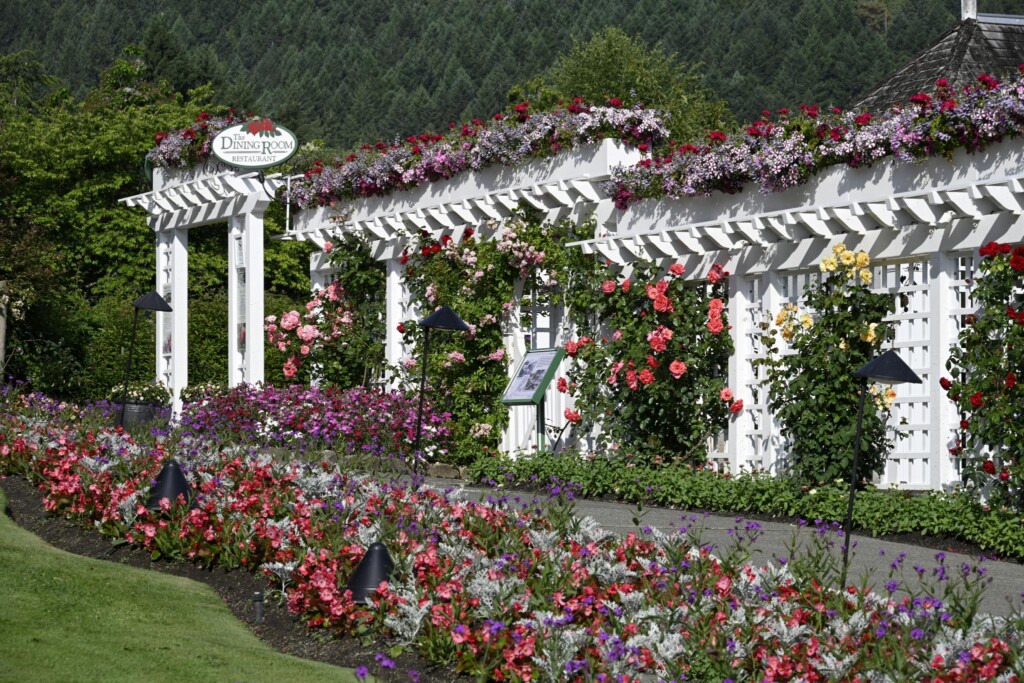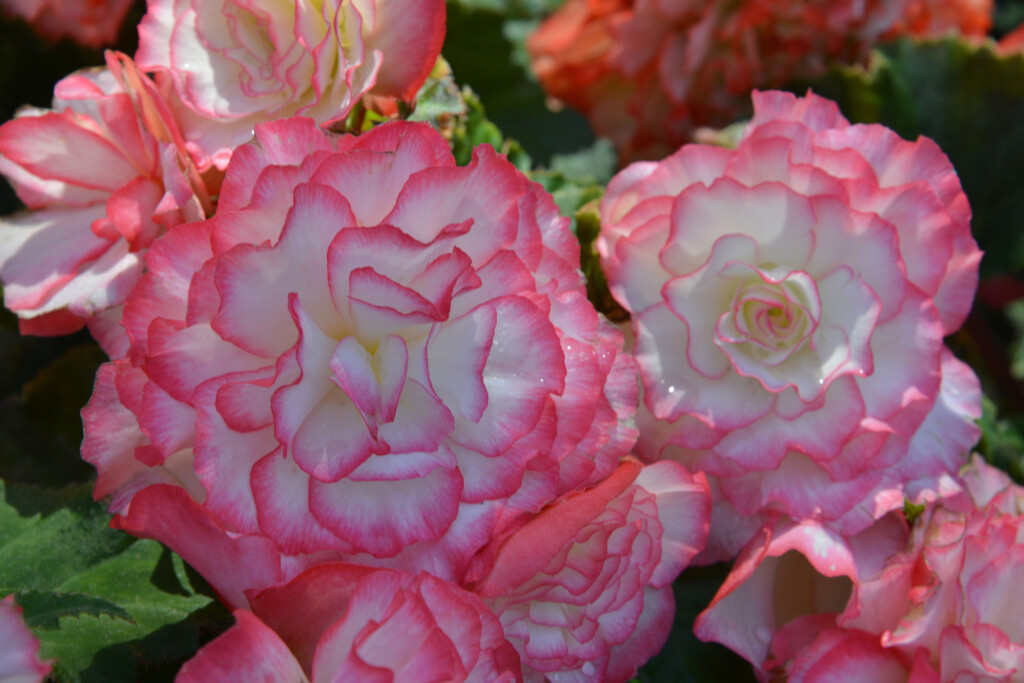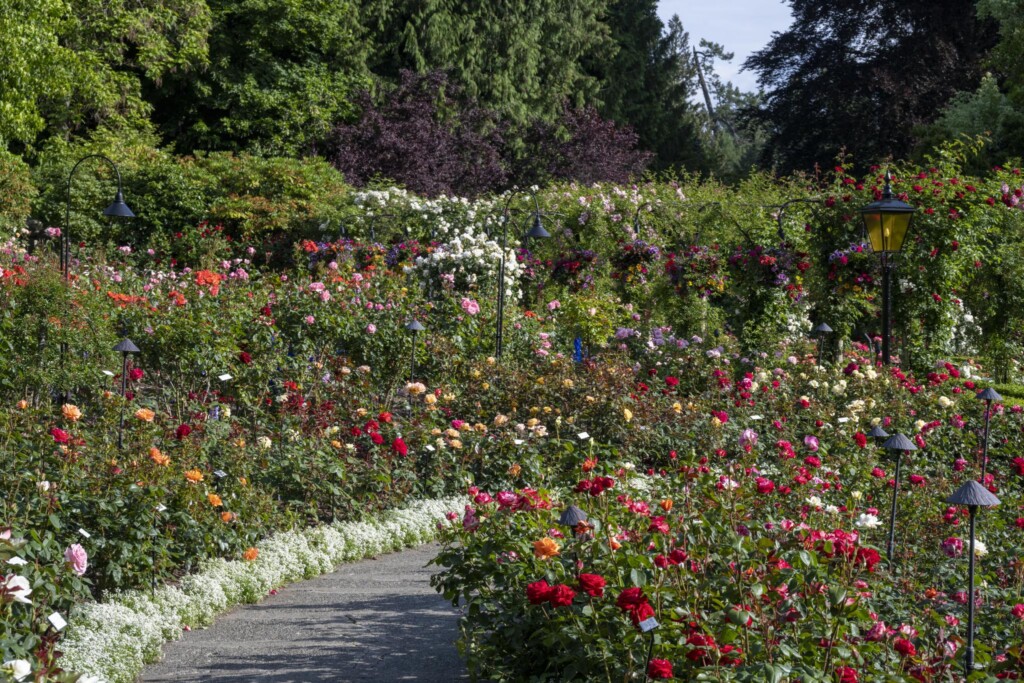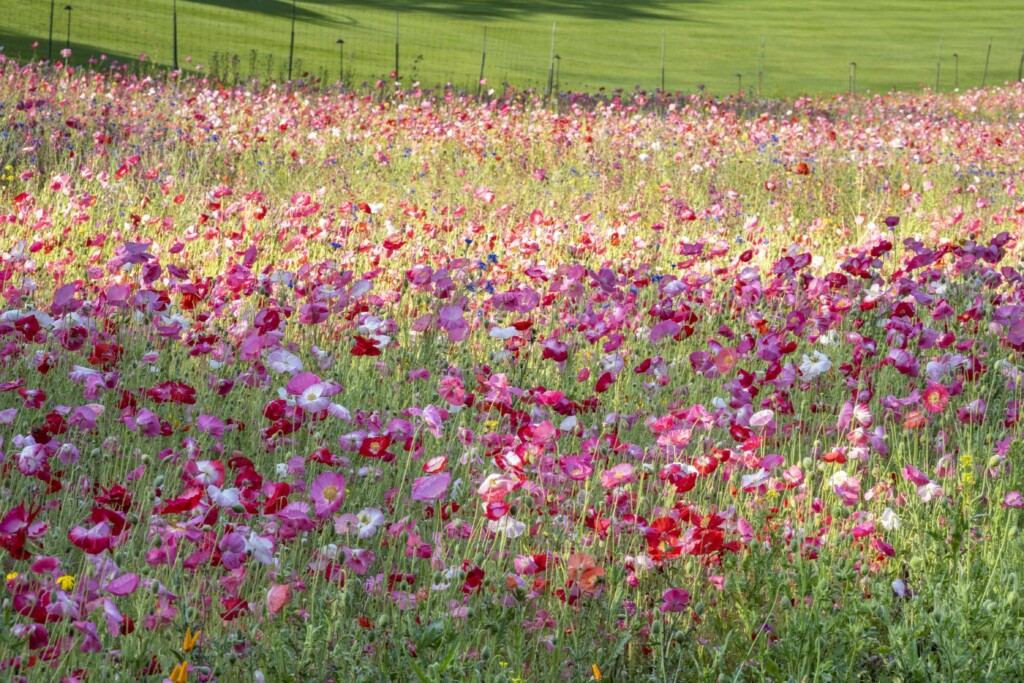What’s in Bloom? July Garden Report
By Thea Hegland
Summertime in The Gardens is gorgeous – for many this is the ultimate time to visit. The long, lazy days of summer are the prime time to explore the many wonders of the world. Here at The Butchart Gardens, the flora is diverse and dynamic, showcasing our horticultural expertise at its absolute finest. First time visitors and regular visitors wander our endless paths, excited to see what is around the next corner and the corner after that.
 Entrance to The Dining Room Restaurant
Entrance to The Dining Room Restaurant
Our Begonia collection is dreamy and lush with riches. Thousands of Begonia plants showcasing more than 90 different types of Begonias are planted throughout the grounds. While we grow many types, it is the Tuberous begonias with their breathtaking blossoms that captivate. Their gorgeous flowers fill the shady corners of the gardens and cascade from hanging baskets, in bright oranges, vibrant yellows, bold reds, and shades of pink to classic white.
 Tuberous begonias
Tuberous begonias
Our Award-winning Rose Garden is simply stunning. Imagine rose after rose tumbling and spilling endlessly over arches, in rich shades of pink and red, pristine white, tropical tones of oranges and cheerful yellows – there is nothing not to love! The sweet perfume and exquisite blossoms of our Rose collection lures you into the heart of The Gardens. Here one can find themselves immersed amongst the 250 varieties and 2500 plants of assorted Hybrid Tea, Grandiflora, Floribunda, Rambler, Climber, Rugosa, Standard, and Old-fashioned Roses.
 The Rose Garden
The Rose Garden
The star of the year must go to the wildflower meadow. A long-standing dream of The Butchart’s granddaughter, this formerly active nursery field has been transformed into a dreamscape of utter bliss. Upon first sight, one is enchanted by the sheer mass beauty of the undulating contours of the meadow. The meadow covers nearly 2 acres and approximately 20 lbs of a custom mix wildflower seed were used to create the natural beauty. The seed was selected with the concept of an evolving focal point as the season progresses. Not only is the meadow beautiful, it provides a host of ecological benefits. Growing wildflowers increases biodiversity; attracting many pollinators such as hummingbirds, butterflies, and bees. It also helps to absorb carbon and increases soil conservation. Wildflowers are generally pest free and low maintenance, thrive in poor soil conditions, and unlike cultivated garden plants, require little to no fuss. The simplicity of the field evokes a sense of ease and peacefulness that resonates with the desire to relax more and let things be.
 Wildflower meadow
Wildflower meadow
You don’t want to miss it!
Plants, trees, and shrubs that are currently blooming
- Abutilon
- Acanthus (Bear’s breeches)
- Aconitum (Monkshood)
- Achillea (Yarrow)
- Alocasia (Elephant’s ear)
- Antirrhinium (Snapdragon)
- Astilbe
- Anthriscus sylvestris ‘Ravenswing’
- Aruncus (Goat’s beard)
- Astrantia
- Baptisia (False indigo)
- Begonia (Tuberous and fibrous)
- Brugmansia (Angels’ trumpets)
- Calceolaria (Scotsman’s purse)
- Callistemon (Bottlebrush)
- Calycanthus ‘Aphrodite’ (Sweetshrub)
- Cardiocrinium (Giant lily)
- Catalpa speciosa (Indian bean tree
- Cephalaria gigantea (Yellow scabious)
- Clematis
- Colocasia (Taro)
- Cornus kousa (Korean dogwood)
- Crambe
- Delphinium
- Deutzia
- Dianthus
- Digitalis (Foxglove)
- Disporum (Fairy bells)
- Eremurus (Foxtail lily)
- Filipendula
- Fuchsia
- Helenium (Sneezeweed)
- Heliotropium (Cherry pie plant)
- Hemerocallis (Daylily)
- Hibiscus
- Hydrangea
- Hypericum (St. John’s wort)
- Inula
- Impatiens
- Iochroma cyanea
- Lantana
- Lobelia
- Maglieta
- Mandevilla
- Manettia
- Matthiola (Stock)
- Monarda (Bee balm)
- Pachystachys lutea (Lollipop plant)
- Papaver
- Pelargonium (Geranium)
- Pentas
- Persicaria (Knotweed)
- Petasites
- Phlomis
- Phlox
- Rheum
- Romneya coulteri (Tree poppy)
- Rosa (Rose)
- Salvia
- Spartium junceum (Spanish broom)
- Stachys marcantha
- Styrax japonicus (Japanese snowbell)
- Syringa reticulata (Japanese tree lilac)
- Tagetes (Marigold)
- Tecoma
- Thalictrum (Meadow rue)
- Torenia
- Tradescantia (Spiderwort)
- Viburnum
- Weigela
- Wisteria

